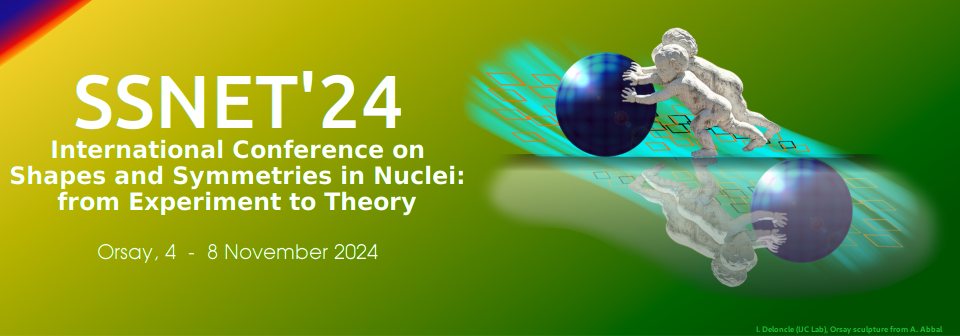Orateur
Description
The valence nucleons are subject to Coriolis and centrifugal forces caused by the rotation of the core of the nucleus. These forces lead to an energy shift between the states with even and odd spins within a rotational band based on the total angular momentum of the states, resulting in the formation of two bands with a ΔI = 2 connection through M1/E2 transitions. Each band is characterized by a quantum number known as signature, which reflects the signature splitting in an axially symmetric nucleus. The unfavoured states experience an increase in excitation energy due to this effect, while
the excitation energy of the favoured states decreases. In cases of odd-odd nuclei where bands are built on specific configurations like πh11/2 ⊗ νh11/2, at lower excitation energy and spin, the unfavoured states exist lower in energy, making them more yrast compared to the favoured states. The system reverts to normal behaviour at higher excitation energies and spin, with the spin at which this occurs being termed the point of inversion; this is referred to as signature inversion. Various factors contribute to the inversion, such as pairing effects, triaxiality, and neutron-proton interaction.
Studying this phenomenon experimentally often involves using gamma-spectroscopy. Research in this area can be particularly challenging when dealing with neutron-deficient isotopes, as their low formation cross-sections make them difficult to study using the available stable beams. Additionally, even if these isotopes are formed, they often have very short half-lives, necessitating in-beam spectroscopy or high-speed separation techniques.
In a recent experiment conducted with JUROGAM3+MARA at Jyv¨askyl¨a, Finland, using a 64Zn beam directed at a thin 58Ni target, we have discovered new bands and transitions in 114I, 117Cs, 118,120Ba, and 120La. Our current research is focused on investigating the phenomenon of signature inversion and its impact on our current understanding of nuclear shapes, particularly in the neutron-deficient isotopes of I, Cs, and La, using in-beam gamma spectroscopy and recoil decay tagging techniques.
During this presentation, I will mainly present the new results obtained for the odd-odd isotopes of I, Cs, and La from the perspective of collectivity and signature inversion.

